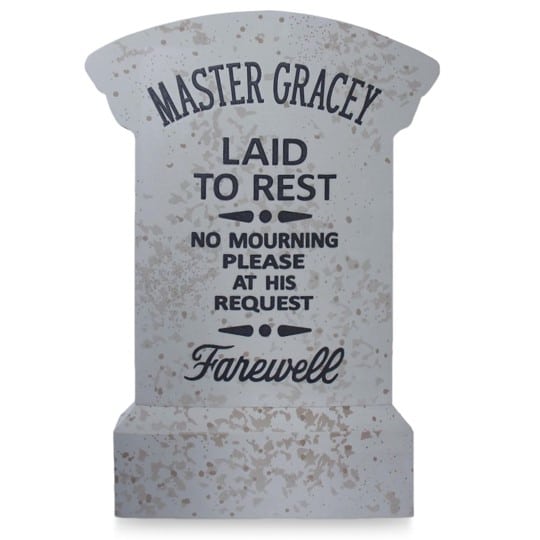
Welcome back to Fridays with Jim Korkis! Jim, the dean of Disney historians, writes about Walt Disney World history every Friday on yourfirstvisit.net.
WHO WAS MASTER GRACEY?
By Jim Korkis
Yale Gracey was called an “Illusioner” in the days before the term “Imagineer” was officially coined. Many of the more prominent special effects in the Haunted Mansion were the work of Gracey.
Today, if his name is known at all, it is because it is mistakenly believed that “Master Gracey” was the master of the haunted house—thanks to a tombstone in the outside graveyard written by Imagineeer X. Atencio, show writer for the attraction, that declares: “Master Gracey, laid to rest, no mourning please, at his request.”

Atencio was trying to offer a tribute to his friend, the boyish Yale Gracey, not make him the owner and master of the house. He was also trying to honor Gracey’s many contributions to the Haunted Mnasion project, especially the fact that his boyhood fondness for magic resulted in some of the illusions in the attraction.
Yale Gracey joined the Disney Studios in 1939 as a layout artist working on Pinocchio and then later animated features including Fantasia. He continued to work on Disney animated films, including doing layouts and backgrounds on most of the Donald Duck shorts directed by Jack Hannah.
Walt Disney had noticed Gracey spending time during his lunch hours with making little gadgets and illusions. Walt was so impressed that Gracey was given a pair of rooms to develop new effects for Disneyland attractions.
Gracey was teamed up with Rolly Crump around 1959 and the two worked on several projects together including early concept work for the Haunted Mansion.
The famous ghosts in the ballroom scene of the Haunted Mansion owe their magic not to holographic projections or, as Imagineer Tony Baxter loves to quip “real ghosts,” but to the “Pepper’s Ghost” illusion that was refined by magician Henry Pepper in 1862 for his stage act. Gracey first encountered this amazing yet simple illusion in his copy of the book The Boy Mechanic, Volume 1, page 52, from 1913.
To demonstrate the effect and how it worked for Walt Disney, Gracey built a working miniature model. It was a box about three feet square. There was a slot at the top of the front side where a viewer could look. Pushing a button the lights come on and the ghosts sweep through the scale model. The model is now housed at the Magic Castle in Southern California.
Gracey built another model of a skeleton ghost playing a pipe organ using the Pepper’s Ghost illusion that was showcased on the Disneyland 10th Anniversary January 3,1965 episode of the Walt Disney’s Wonderful World of Color.
Yale Gracey experimented with using film of Hans Conried’s talking head from the Magic Mirror on the 1956 Disney television show episode Our Unsung Villains and projecting it on a bust of Beethoven. While it didn’t sync exactly, it appeared as if the bust came to life and began talking and encouraged Gracey to develop it even further into the four singing busts in the graveyard.
Imagineer Rock Hall told me in a 2010 interview: “He always said that the best effects were simple effects like finding out that a sculpted face when vacuum formed and viewed from the back seems to follow you. This was an accidental development that Yale discovered and ended up using in the hallway at the Haunted Mansion.”
Yale Gracey was the master of creating things that had never been created before like the fireflies in Disneyland’s Blue Bayou and the fire scene in Pirates of the Caribbean that was so realistic that the fire department insisted it be toned down and have a shut-off switch in case a real fire ever broke out building. It is a shame he is not better known for his many contributions to the Disney theme parks.
* * * * *
Thanks, Jim! And come back next Friday for more from Jim Korkis!
In the meantime, check out his books, including his new Halloween-appropriate Vault of Walt Volume 9: Halloween Edition, and his other new book, Hidden Treasures of the Disney Cruise Line.
Follow yourfirstvisit.net on Facebook or Twitter or Pinterest!!


